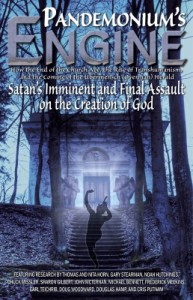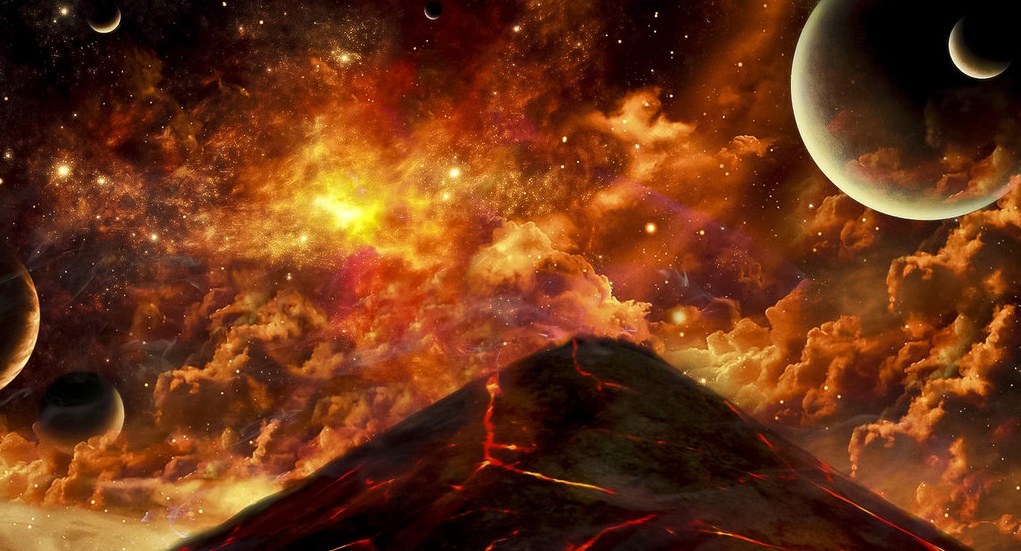THE COSMIC MOUNTAIN
First, I would like to offer a quick word about the use of the term myth or mythology. In popular usage the term has come to mean a story which is necessarily false but that is not the way scholars often use the term. For instance the Pocket Dictionary of Biblical Studies defines myth as, “A story, usually relating the actions of supernatural beings, that serves to explain why the world is as it is and to establish the rationale for the rules by which people live in a given society. In classical Greek, myths were simply stories or plots, whether true or false;” In other words, please do not read into my use of “myth” that I think the events described have no historical basis. It is my thesis here that the mythologies referenced by the prophets do have a real space time point of reference to actual events whether earthly or cosmic. With that being said, the “mount of assembly in the far reaches of the north” (Is 14:13) was originally a mythological meeting place for the pagan gods and corresponds to Mount Zaphon in Ugaritic (Canaanite) texts. These texts describe Mount Zaphon as Baal’s “holy mountain”, “beautiful hill” and “mighty mountain.”[1] According to John Walton:
Saphon/Zaphon is identified with a mountain, Jebel al-ʿAqra, or Casius in classical sources (deriving from the Hittite Chazzi), which lies north of Ugarit. It is considered holy because it is capped by Baal’s palace in the Baal Epic and is also the site of his burial. (Walton 2009b, 73)
Isaiah was drawing on imagery from Baal-Athtar mythology to make a point about the king of Babylon as well as a divine usurper we know as Satan. It may seem odd that Isaiah would reference a Canaanite holy mountain, yet the Hebrew prophets were famous for juxtaposing Yahweh against the Canaanite deities. For instance, the biblical account of Elijah pronouncing a drought on the land was an assault on Baal as fertility god (1 Kings 17:1). His subsequent showdown with the prophets of Baal was a further demonstration of their god’s impotence (1 Kings 18:38). In the same way, the prophets appropriate the property of a foreign god to assert Yahweh’s superiority.
Jerusalem was located at a higher elevation than much of the surrounding region. The temple was on a conspicuous summit in Jerusalem, his holy hill Mount Zion (Ps. 2:6; 99:2, 9). Psalm 48 is an explicit example of the connection to Zaphon “…His holy mountain, beautiful in elevation, is the joy of all the earth, Mount Zion, in the far north, the city of the great King.” (Ps 48:1b-2) This “far north” reference connects to the Isaiah taunt song. Heiser notes that,
Yahweh’s sanctuary is on a mountain, Mount Zion (Ps 48:1-2) which is located in the “heights of the north (saphon),” or on a “very high mountain” (Ezek 40:2). Zion is the “mount of assembly” again located in the “heights of the north (saphon),” (Isa 14:13). (Heiser 2004, 42)
It is important to note that it is described as “in the far north” yet Jerusalem is hardly the extreme geographic north. There is something much bigger going on. The ancient Near Eastern cosmology was a tripartite conception in which the abode of the gods was “the heights of the north.” Thus, the cosmic north is being alluded to designating the divine mount Zion.[2]
Yahweh was associated with a holy mountain from the very beginning in Eden.[3] Ezekiel 28:13-16 equates the garden of God with the mountain of God. Then during in the interim he relocated to Mount Horeb or Sinai (Ex. 3:1). The assembly or mô∙ʿēḏ terminology alludes to the “tent of meeting” which served temporarily and then later the temple proper in Jerusalem on Mount Zion is associated with the mô∙ʿēḏ terminology (Ps.74:4; Lam. 2:6). [4] According to Ezekiel, Yahweh vacated the mountain prior to the temples destruction by the Babylonians (Eze. 10:18). Lamentations 5:16 describes Mount Zion as utterly desolate. Jesus was the fulfillment of Yahweh’s return for the second temple period. However, the second temple was also destroyed. Still yet, the Shekinah is promised to return to a new temple in the end time after the nation has repented and been cleansed (Eze 43:1-9). It will be argued that this corresponds to what we know about Armageddon and the Day of the Lord.
It seems likely that Armageddon refers to the end time battle for Yahweh’s holy mountain. Mounce comments, “Still others interpret the term in reference to some ancient myth in which an army of demons assault the holy mountain of the gods.”[5] And indeed various texts support the idea that this will be a war with divine, demonic and earthly soldiers. Zechariah describes the Lord returning with his “holy ones” likely angel warriors (Zech. 14:5). Other Old Testament passages also support the idea (Is. 13:16; 24:1-21; Joel 3:9-12). The book of Revelation describes the involvement of demonic hordes (Rev. 16:14) and armies from heaven dressed in white linen which accompany the Lord (Rev. 19:14). Finally, the Dead Sea Scrolls also support this future event. Heiser argues, “The conflict described in the War Scroll involves both men and heavenly beings fighting side-by-side and against one another.”[6] Accordingly, it seems appropriate to believe that just as Jesus leads an army, the Antichrist or Beast is Satan’s incarnate general.
 Get a signed copy of Pandemonium’s Engine here for $10.00
Get a signed copy of Pandemonium’s Engine here for $10.00
[1]John H Walton, Zondervan Illustrated Bible Backgrounds Commentary (Old Testament) Volume 5: The Minor Prophets, Job, Psalms, Proverbs, Ecclesiastes, Song of Songs (Grand Rapids, MI: Zondervan, 2009), 362.
[2] H. Niehr, “Zaphon” in Dictionary of Deities and Demons in the Bible DDD, 2nd extensively rev. ed. K. van der Toorn, Bob Becking and Pieter Willem van der Horst (Leiden; Boston; Grand Rapids, Mich.: Brill; Eerdmans, 1999), 927.
[3] Michael S. Heiser, “The Divine Council in Late Cannonical and Non-Cannonical Second Temple Jewish Literature,” (Ph.D. diss., University of Wisconsin-Madison, 2004), 43.
[4] Torrey, “Armageddon,” 246.
[5] Mounce, The Book of Revelation, 301.





